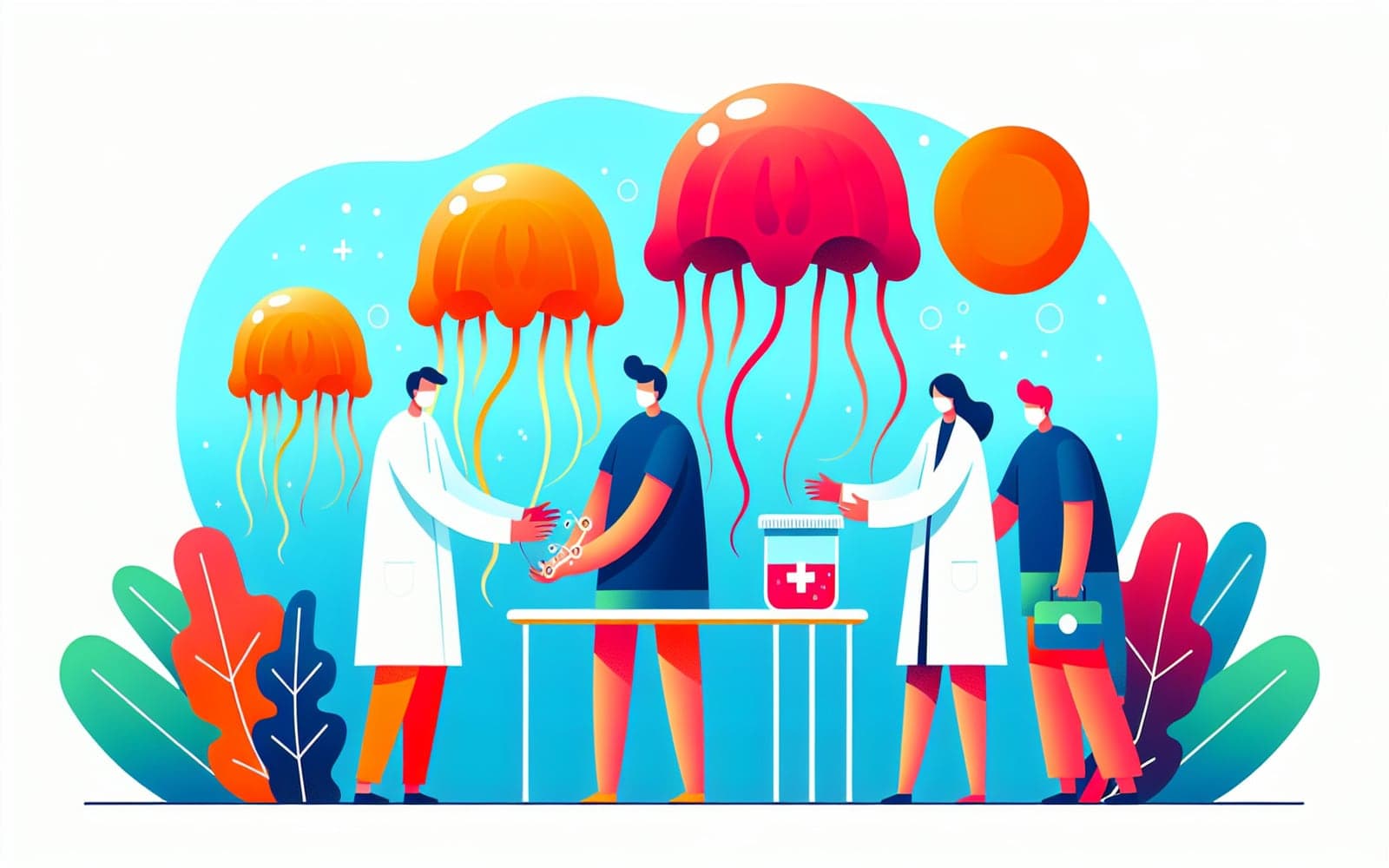Treating Jellyfish Stings: What You Need to Know
Published: Sep 02, 2024

Medically reviewed by Angel Kerney | MD, F.A.C.O.G Obstetrics & Gynecology on September 2nd, 2024.
Got stung by a jellyfish? Don’t panic! Learn the steps to take for effective treatment and pain relief.
Contents
First Aid at the Scene
The first step is to rinse the sting site with seawater, not fresh water, as fresh water can trigger more venom release. Next, carefully remove any visible tentacles with the tips of your fingers to prevent further stinging.
Pain Management Techniques
For most jellyfish stings, immersing the affected area in hot water can help relieve pain. If hot water is not available, cold packs may be used. Pain relievers such as ibuprofen or acetaminophen can also be effective.

When to Seek Medical Help
Seek medical help if you experience severe symptoms like difficulty breathing, chest pain, or if the pain is unbearable. In some cases, stings can lead to severe systemic reactions that require emergency care.
Frequently Asked Questions
Rinse with seawater and remove tentacles with your fingers.
Use hot water immersion and pain relievers like ibuprofen.
Seek help if you have severe symptoms like breathing difficulties.
Key Takeaways
Quick and effective first aid can make a big difference in jellyfish sting recovery.
Ask Doctronic how to best manage jellyfish stings today.Related Articles
References
Loten C, Stokes B, Worsley D, et al. A randomised controlled trial of hot water (45 degrees C) immersion versus ice packs for pain relief in bluebottle stings. Med J Aust 2006; 184:329.
McGee RG, Webster AC, Lewis SR, Welsford M. Interventions for the symptoms and signs resulting from jellyfish stings. Cochrane Database Syst Rev 2023; 6:CD009688.
This article has been reviewed for accuracy by one of the licensed medical doctors working for Doctronic. Always discuss health information with your healthcare provider.